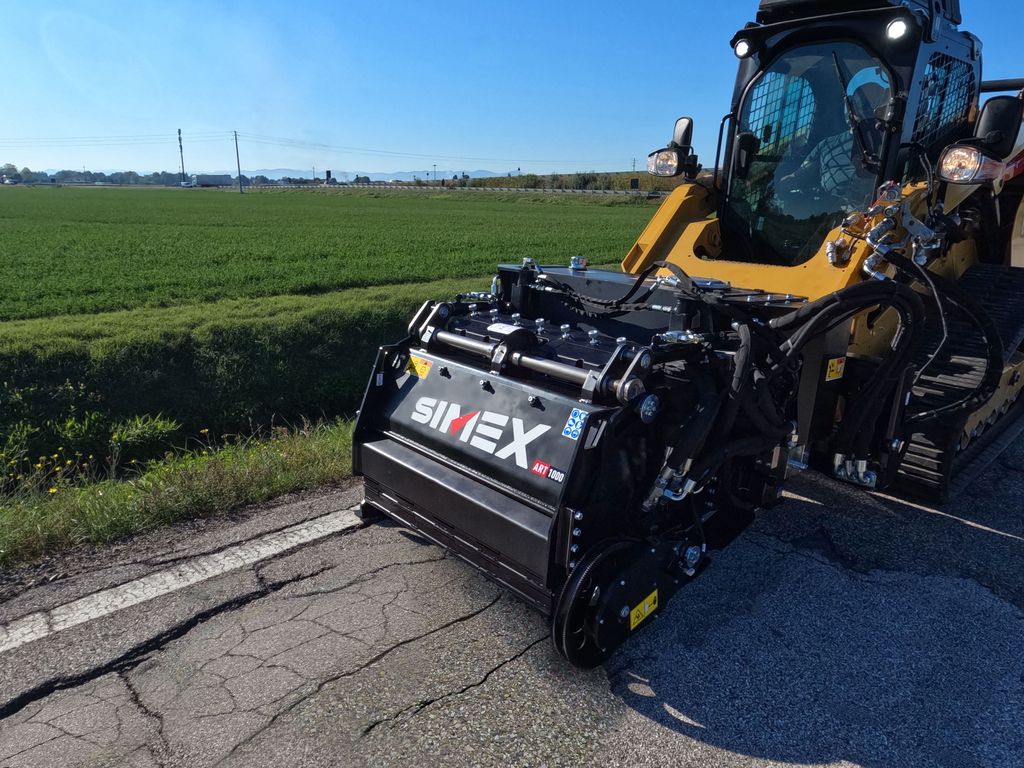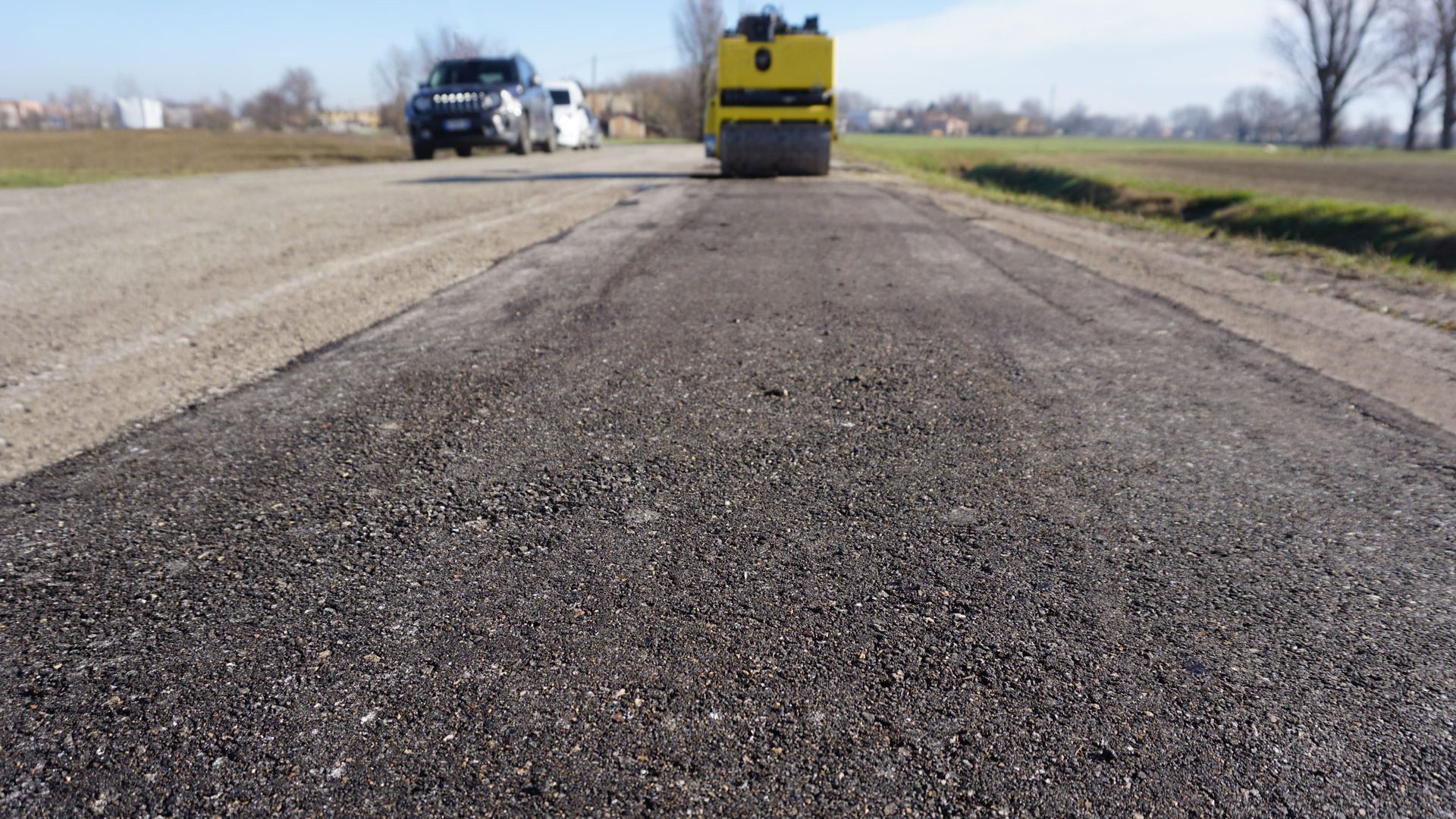
July 25, 2023
Simex ART 1000: the cold regeneration of asphalt
#road construction #Italy@bauma #hydrocuttersSimex ART 1000 is a cold asphalt regeneration technology that opens up road recycling in small urban construction sites
Simex has launched ART technology, an acronym for Asphalt Regeneration Technology, that looks very promising especially in the urban shipbuilding sector.
The great advantage of this new technology is the ability to make recycling and cold regeneration of asphalt more user friendly. This was till yesterday limited to large road and motorway works, therefore related to high overall dimensions machines and operating costs.
Cold recycling is instead particularly suitable for repairing and restoring road surfaces in urban construction sites, where the machines cannot be excessively bulky and costs must be decidedly lower.
Simex ART 1000: evolution is also chemistry
 The new ART technology was developed by Simex based on the PL milling machines, in particular on the PL1000 which works with an operating width of one metre. The development of this equipment has not only involved the engineering side of the mechanical project. The ART1000 was designed both together with DICAM, the Department of Civil, Chemical, Environmental and Materials Engineering of the University of Bologna, and in collaboration with Iterchimica, an Italian company specialized in the study and production of specific chemical additives. The reason is well explained.
Cold recycling is based on the regeneration of the milled material so that it can be immediately re-compacted.
A large part of the development of this technology has therefore focused on the correct dosage of additives to be used on the milled substrate, to be supplied in different quantities based on the working depth and the forward speed of the machine. In short, it is a mechanical-chemical mixing that allows to obtain a high quality final product, as well as favoring the optimization of the mixing.
The new ART technology was developed by Simex based on the PL milling machines, in particular on the PL1000 which works with an operating width of one metre. The development of this equipment has not only involved the engineering side of the mechanical project. The ART1000 was designed both together with DICAM, the Department of Civil, Chemical, Environmental and Materials Engineering of the University of Bologna, and in collaboration with Iterchimica, an Italian company specialized in the study and production of specific chemical additives. The reason is well explained.
Cold recycling is based on the regeneration of the milled material so that it can be immediately re-compacted.
A large part of the development of this technology has therefore focused on the correct dosage of additives to be used on the milled substrate, to be supplied in different quantities based on the working depth and the forward speed of the machine. In short, it is a mechanical-chemical mixing that allows to obtain a high quality final product, as well as favoring the optimization of the mixing.
The Simex method: how it works
Simex ART provides a single piece of equipment. The mobile construction site, with a team of just a few workers, is quick and streamlined in its composition, since everything needed can be transported to the site with a trailer on which the tiller-mixer, the compact loader, a compactor as well as a spreader can be loaded. The site operations are divided into three phases. First, only the Simex ART milling drum is activated at a depth between 5 and 7 cm, depending on the extent of the deterioration, nebulizing water if necessary to ensure dust removal.
After distributing the cement on the milled material obtained, the second drum is activated. This is the mixer, which mixes the milled material with the additive. The correct proportional dosage of product is guaranteed by the presence of a wheel for detecting the forward speed. It is at this point that water is nebulised to obtain the correct humidity level of the milled material.
Finally, compaction takes place. The final result is a 100% regenerated bituminous conglomerate, immediately walkable and highly sustainable.
The material may require a second mixing phase, if required. This because the granulometry of the material must have certain technical characteristics before adding the additive.

The operational benefits
With Simex ATR, the restoration of deterioration takes place in a functional, fast and long-lasting way. The road construction site is small and dynamic and includes few tools, so much that all the costs of managing or transporting raw materials are drastically cut down.
The advantages are, of course, also environmental since 100% of the material is reused on site while the regeneration of the asphalt can also be repeated in subsequent maintenance. Environmentally friendly materials are used, while no handling and management of special waste is carried out.
Similar, but not identical, to cold recycling
The results it that the process can be traced back to on-site recovery, in a completely analogous way to cold recycling but, however, with two substantial differences. First of all, the maximum thickness can never exceed 10 cm; secondly, the surface becomes safe in a very short time without using any layer of new material.








